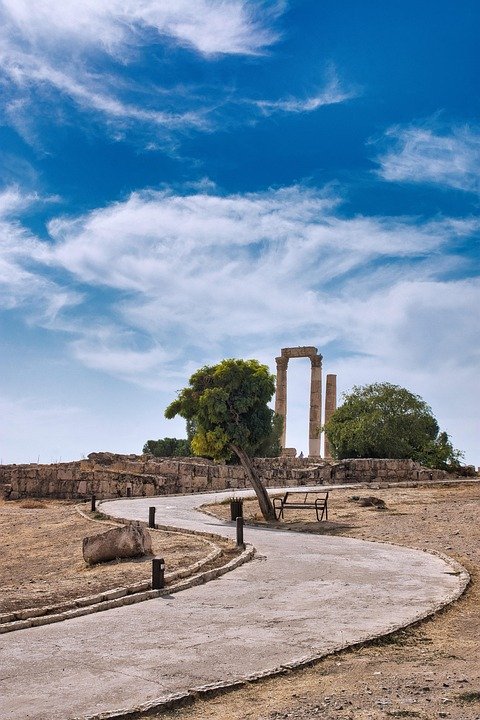Wondering when to go to Amman without running into huge crowds or bad weather? It's a fair question, and the answer can really vary depending on a few key factors: the weather, your budget, local events, and what you hope to experience in this vibrant city. Let's dive into what you need to know before planning your trip to Amman!
Overview of Amman’s Climate
Amman has a Mediterranean climate, which means that it experiences distinct wet and dry seasons. The weather in Amman can range from hot summers to mild, rainy winters. Generally, summer (June to August) can see temperatures soaring to around 30°C to 35°C (86°F to 95°F), while the winter months (December to February) can drop down to about 5°C to 10°C (41°F to 50°F).
Between these extremes, spring (March to May) and fall (September to November) offer the most moderate temperatures. This makes the seasons in Amman particularly enjoyable for travelers—if you know when to go!
Month-by-Month Breakdown
January – March (Winter)
Weather: This is the chillier part of the year, with January typically being the coldest month. Expect temperatures between 5°C to 15°C (41°F to 59°F) and occasional rain.
Events: The Jordan Valley Festival takes place in January, showcasing local culture and cuisine.
Pros/Cons: Winter is perfect for avoiding the crowds; however, some attractions may operate on shorter hours, and outdoor activities are limited due to the chill.
Who it's for: Great for budget travelers looking for lower hotel rates and those interested in authentic local culture.
April – June (Spring)
Weather: Spring is a fantastic time to visit Amman. Temperatures are pleasantly mild, ranging from 15°C to 28°C (59°F to 82°F).
Events: The Jerash Festival of Culture and Arts usually occurs in July; however, several lead-up events start in May.
Pros/Cons: The blooming flowers and mild weather make for stunning photography opportunities. Just watch for occasional dust storms.
Who it's for: Perfect for photographers and families, as well as travelers looking for a balance of comfort and outdoor exploration.
July – September (Summer)
Weather: Summer brings heat! Amman can get quite hot, with temperatures soaring to over 30°C (86°F) and sometimes even hitting the high 30s°C (100°F).
Events: Ramadan usually falls in this period (dates vary). It's a unique time to experience local culture but be mindful that some services may be reduced.
Pros/Cons: Longer days for exploring; however, the high temperatures can make it uncomfortable, especially in outdoor markets.
Who it's for: Best for beach lovers who can easily take a day trip to the Dead Sea or anyone willing to brave the heat for fewer crowds.
October – December (Fall)
Weather: As the weather cools off again, you'll see temperatures averaging between 10°C to 25°C (50°F to 77°F). It's a lovely transition to the cooler months.
Events: The Jerash Festival continues into the fall, and Christmas is celebrated with local flair.
Pros/Cons: Fewer crowds as tourists taper off after summer. Just be prepared for some rain towards December.
Who it's for: Ideal for solo travelers and romantic getaways, offering cozy evenings and beautiful fall sunsets.
Tips Based on Travel Style
-
For Budget Travel: Late fall (November) and winter months (January and February) are your best bets for lower hotel prices and less competition for flights.
-
For Avoiding Crowds: Traveling in the winter months (especially January and February) or shoulder seasons like mid-September to early October can help you dodge the tourist rush.
-
For Outdoor Activities or Cultural Events: If hiking and exploring the beautiful terrain around Amman is your thing, stick to the spring months (April to June) when the weather is perfect for trekking.
- For Romantic or Solo Trips: Late spring and early fall provide lovely weather and vibrant city life, along with a romantic sunset vibe.
It really depends on what kind of experience you're looking for. Some travelers love the tranquility of January or February, finding joy in a quiet vibe, while others aim for the festivals held in spring or early fall.
FAQ
Is January a good time to visit Amman?
Yes, it's quiet and budget-friendly, but prepare for chilly weather.
When is the rainy season in Amman?
Mainly between November and March, with January typically having the most rain.
What's the cheapest time to visit Amman?
Winter months, particularly January and February, usually offer the best deals on flights and accommodations.
What's the peak season in Amman?
Spring (March to May) and summer (July to August) are generally the busy tourist seasons, with many events taking place.
So, whether you're looking for a bustling festival atmosphere, quiet exploration, or a romantic getaway, Amman has something to offer year-round. Just consider what you want to do and your comfort with weather conditions, and you're bound to have a fantastic trip!








